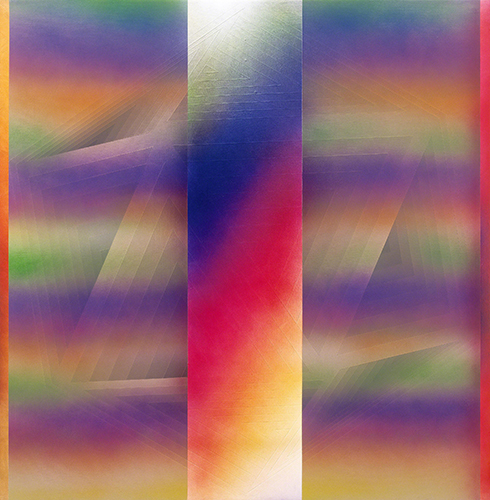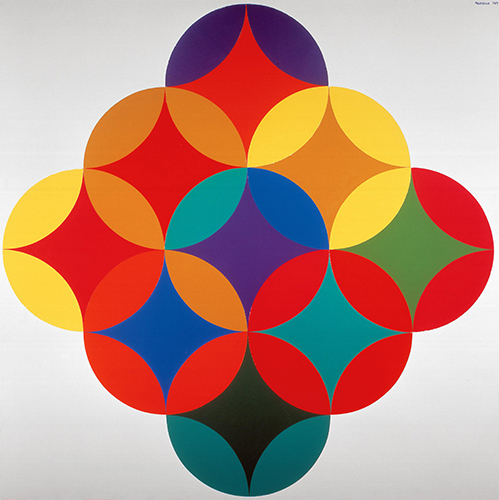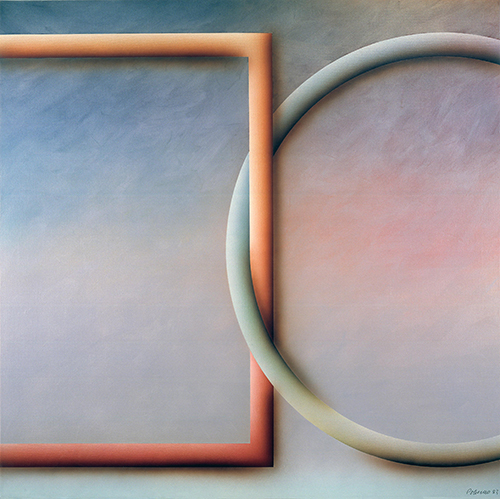Gem of the Month: Rogelio Polesello
“Argentinian Modernism” is not really a term bandied around at any length in surveys of modernism of the mid- to late 1900s. The truth is, the development of modernist art movements in Central and South America is sadly neglected in the US and Europe, despite the fact that European and American modernist movements had great impact on South American modernism!
 |
| Rogelio Polesello (1939–2014, Argentina), Fragments, 1979. Acrylic on canvas, 69" x 69" (173 x 173 cm). Albright-Knox Art Gallery, Buffalo, NY. © 2019 Artist or estate of Artist. (AK-557) |
In Argentina, during the time political liberties were increasing from the late 1910s into the 1940s, most modernist art was influenced by European artists such as Expressionists, Surrealists, and Fantasy artists like Paul Klee (1879–1940). After World War II (1939–1945), a growing number of Argentinian artists studied not only in Paris, but also in New York, where Abstract Expressionism was just taking off. The 1946 “White Manifesto” written by a number of Argentinian artists argued for the supremacy of nonobjective abstraction. From that period on, Argentinian modernists participated in every avant-garde movement in Western art.
Born in Buenos Aires, Rogelio Polesello studied at the Prilidiano Pueyrredón National School of Fine Arts in Buenos Aires, graduating in 1959 in print, drawing, and illustration. From a young age, he worked in graphic design, which led him to experiment freely with the modernist styles of the time. At the age of 22, he had his first solo painting exhibition at the Pan American Union in Washington, DC. His early work reflected the influence of Constructivism, a European (Russian derivation) style that emphasized the purity of geometric abstract forms. From this geometric simplicity, the next step was the optical movement that repeated geometric forms could engender in the Op Art Style.
Evidence of his brilliant fluidity with modernist styles is how, though influenced by Op Art, he did not stick with one approach. He painted in both hard-edge forms, like Painting below, and in painterly chromatic variations, like Fragments. The breadth of his experimentation with Op Art reminds me of Herbert Bayer (1900–1985), a Bauhaus artist who was also initially a graphic designer, and who also did many interpretations of Op Art. Therefore, it is difficult to pin down Polesello as solely an Op Artist. He flirted with Hard Edge, Concrete Art, and Neo-Illusionism, as well. He was not solely a painter, creating works in sculpture, interior design, textile design, and architecture.
Here’s an earlier and a later Polesello from the one above: Fragments seems like a transition between the hard-edge Op Art style and the Neo-Illusionism of the later work. He’s combined the geometric forms of Painting with the nuanced fields of color of Fragments.
 |
| Rogelio Polesello, Painting, 1969. Acrylic on canvas, 51 ¼" x 51 ¼" (130.2 x 130.2 cm). Albright-Knox Art Gallery, Buffalo, NY. (AK-533) |
 |
| Rogelio Polesello, No. 8, 1983. Acrylic on canvas, 58" x 58" (147.3 x 147.3 cm). Albright-Knox Art Gallery, Buffalo, NY. (AK-563) |


Comments